The industrial manufacturing market has experienced unprecedented change over the past two decades. Industrial performance improvements led by transformational initiatives such as Industry 4.0 are responsible for the internet of things (IoT) implementations across the factory floor.
The deployment of leading-edge industrial control, monitoring, and analysis systems is now commonplace. This increase in technology is set against the backdrop of increasing pressure on space utilisation, with the available floor space for essential control cabinets at a premium. The requirement to place more technology within a single cabinet brings its own challenges accommodating power, signal conditioning, connectivity, and safety systems. This article highlights the structured and streamlined approach Phoenix Contact brings to control cabinets, ensuring customers can confidently implement systems.
Industrial transformation
As technologies advance, so does the opportunity to enable applications and use cases previously impossible. Timing plays an essential factor, and the timing was perfect when industrial performance improvement and transformation initiatives aligned with the nascent industrial internet of things (IIoT). Deploying technology to monitor, analyse, and adjust manufacturing processes in real-time leads to productivity and efficiency improvements. The performance of manufacturing assets, from complete chemical processes, individual production lines, and single electric motors, can be optimised to achieve higher throughput levels while reducing unplanned and costly downtime to a minimum. However, the industrial environment can present a challenge for many electronics, with static electricity, humidity, vibration, and wide variations of temperature, to mention just a few considerations.
Factory floor space at a premium
Typically, factory floor space is at a premium due to cost, and the norm is to limit each major production asset to just one control cabinet. In turn, this restricts the amount of equipment placed in each cabinet. Industrial automation machinery and system builders are acutely aware of these challenges and strive to achieve space-efficient cabinets while controlling the implementation costs. This requirement is paramount so that their customers can reap the commercial benefits of enhanced productivity.
However, placing a large amount of components within a confined space is not without several considerations. Packing DIN-rail mounted switchgear, power supplies, process controllers, and IIoT edge nodes may be possible, but it can create heat dissipation issues and restrict airflow. Electronics-based systems are prone to poor reliability as the ambient temperature rises. Also, access and clarity of wiring are crucial for ease of maintenance and unit replacement. Faulting and attempting to follow cables within a densely packed and operational control cabinet also creates safety issues for maintenance staff. Most control cabinets built today need to integrate every aspect of the controlled process, from power supplies, inputs from edge sensors, process controllers, and network connectivity to cloud services. A more structured approach to laying out components and cable terminations within a confined control cabinet can make it significantly easier for servicing and fault finding.
Control cabinet selection
To satisfy the requirements of industrial system builders, Phoenix Contact has developed the COMPLETE line of control cabinet solutions, including all the documentation and diagrams necessary for the reliable implementation, and running of an application.
Power reliability
Perhaps one of the most crucial aspects of a control cabinet is power. All the integrated systems and external equipment rely on a reliable power source. Protection from line surges, high voltage transients, overvoltage, and overcurrent conditions is paramount, as is the need to provide redundancy and alternative power sources such as battery backup. Figure 1 highlights the complexity of provisioning power for an industrial application.
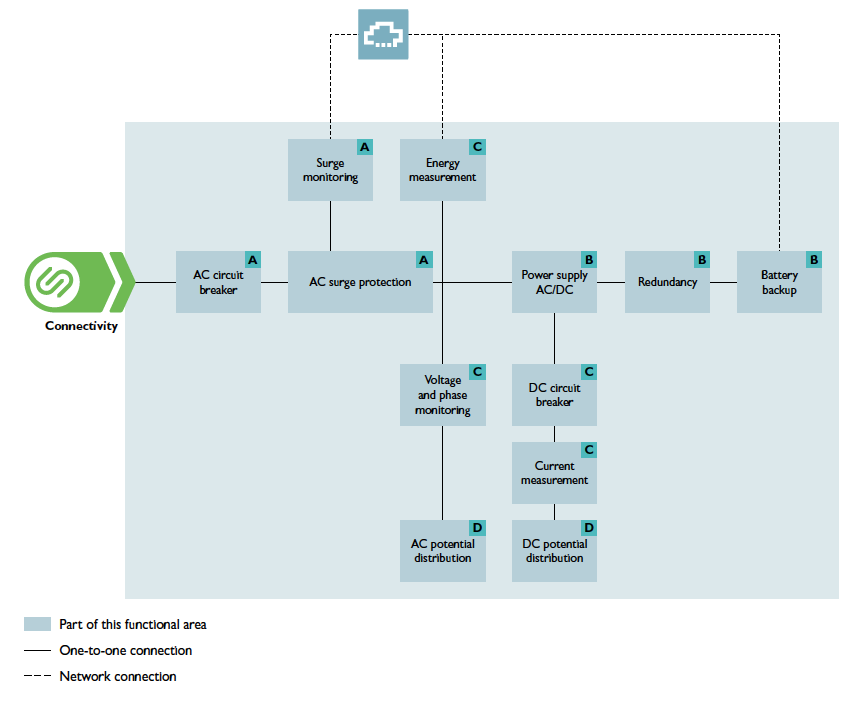
There are four aspects of power to consider: protection, conversion, monitoring, and distribution. The COMPLETE range accommodates each with a range of modules, measurement equipment (such as energy meter or programmable logic controller), and electrical connection methods. Protection includes preventing harmful transients from interrupting equipment operation and potentially causing permanent damage to electrically sensitive components.
Power conversion covers AC/DC and DC/DC converters to supply the enclosed systems and provide redundancy of supply either through line power or battery uninterruptable power systems. Constantly monitoring the power supplies helps achieve the organisation’s energy efficiency goals and indicates signs of impending machine failure or erratic behaviour.
Power distribution is often overlooked but is an equally important aspect of power reliability. Every wire in a cabinet has a purpose, so a purposeful, safe, and reliable connection is vital.
Connectivity
Figure 2 highlights the diversity of connectivity considerations inside a cabinet. Wired connections to production assets, host computer servers, sensors, and actuators must be connected in the panel building process. Power terminations and connections also need to be routed through to those items too. There will be a wide variety of different voltages and currents carried by a range of cable sizes. Some wires may be screened to preserve signal integrity and need terminating accordingly. Sensor cables may involve analogue or digital signals. To acquire digital signals, check Phoenix Contact I/O terminal module, designed to use within an inline station.
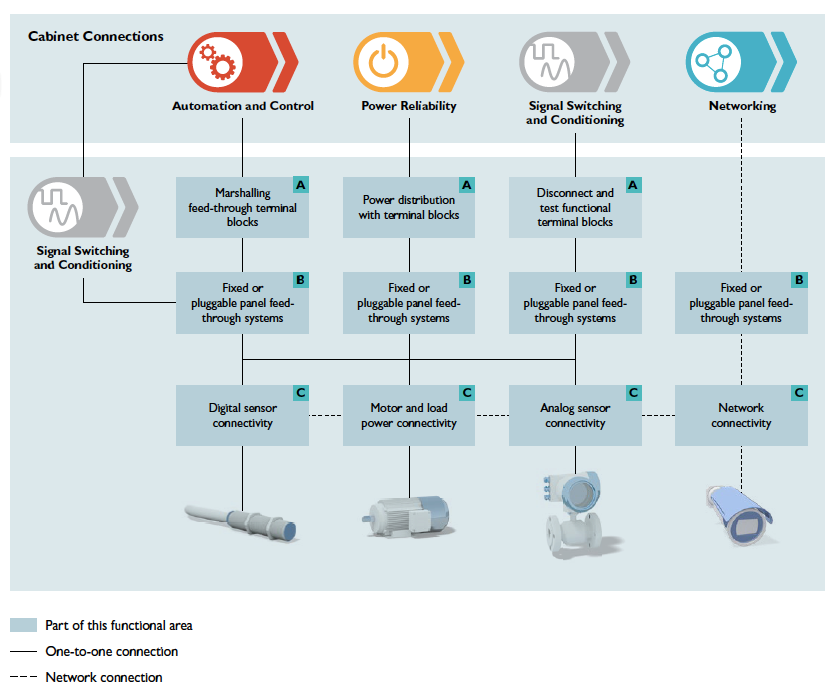
The COMPLETE range accommodates all popular types of connectivity, interface and touch panels, and unit mounting options.
Recommended product
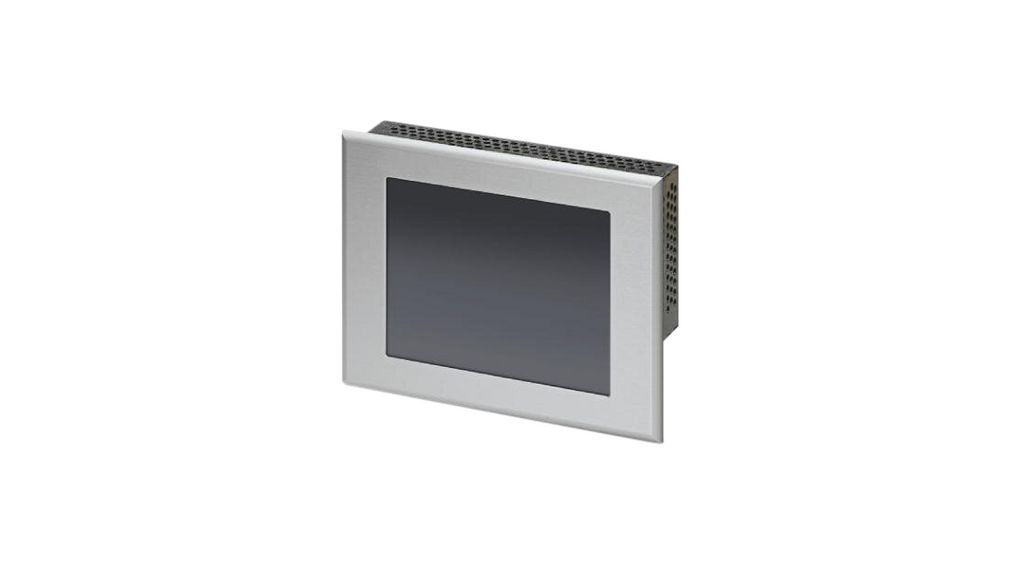
Touch Panel 5.7″ 320 x 240 IP65 Ethernet/USB/CAN, Phoenix Contact
Touch panel with 14.5 cm/5.7″ analogue resistive (polyester) TFT active-display, 320 x 240 pixel(s) (QVGA), 65536 colours, Arm9TM, 200 MHz, 2x USB host 2.0, 1 x Ethernet (10/100 Mbps), RJ45, Windows CE 5.0, and user software: TSvisRT (bus system: CAN). Find out more about choosing the right touch panel.
Signal switching and conditioning
The industrial domain is an electrically noisy environment, with many electrical transients created during motor start-up and switch-off and the operation of other production assets. Analogue sensor output signals are particularly vulnerable to these transients, so some form of signal conditioning occurs in addition to screening cables and implementing electromagnetic interference (EMI) preventative measures. Phoenix Contact offers a range of analogue and digital signal conditioning modules to improve the integrity and isolation of sensor outputs – see Figure 3.

Recommended products
Electronic Motor Starter, Phoenix Contact
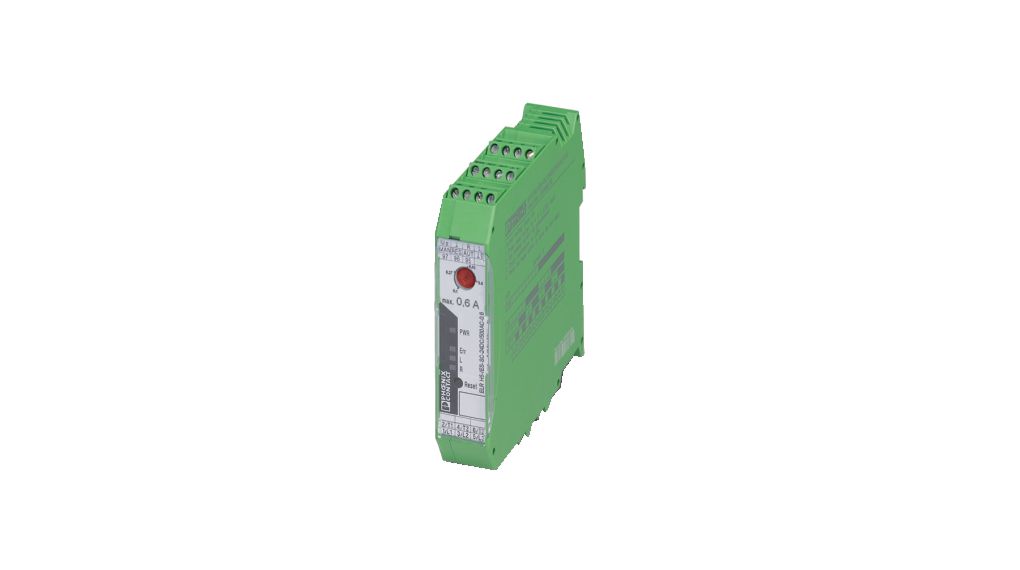
I/O Terminal Module 16DI 0DO 24VDC, Phoenix Contact
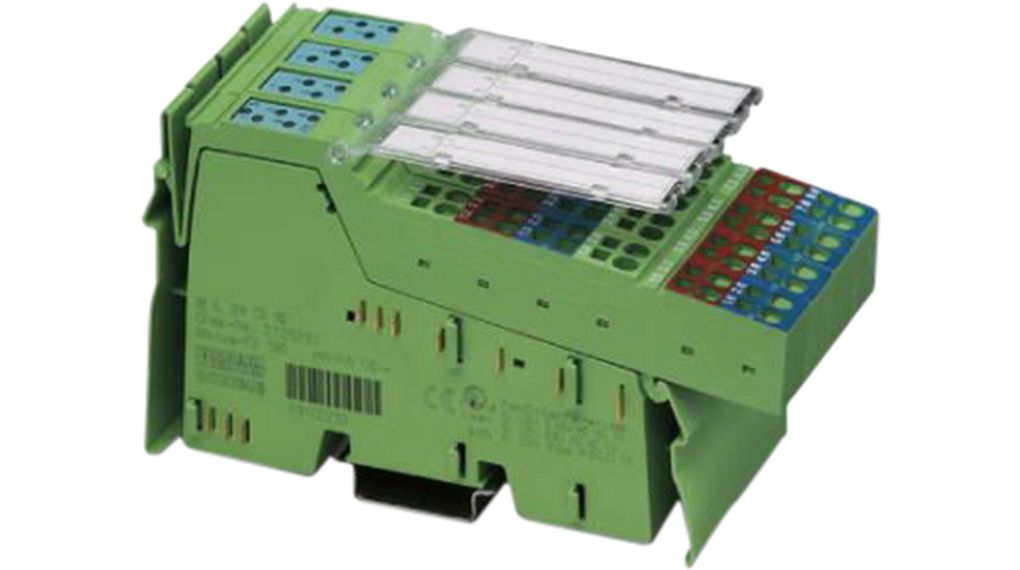
Signal Conditioner, Phoenix Contact

Safety
All control systems and production assets fall within the scope of internationally recognised functional safety regulations such as IEC 61508, ISO 13849, and ISO 62061. These standards stipulate the required safety behaviour of equipment to reduce the risk of injury and harm to any operator or maintenance staff. A safety integrity level (SIL) indicates the probability of equipment failure and the potential consequence and severity of an injury resulting. The COMPLETE series includes compliant relays, switchgear, motor drives, and other protection devices.
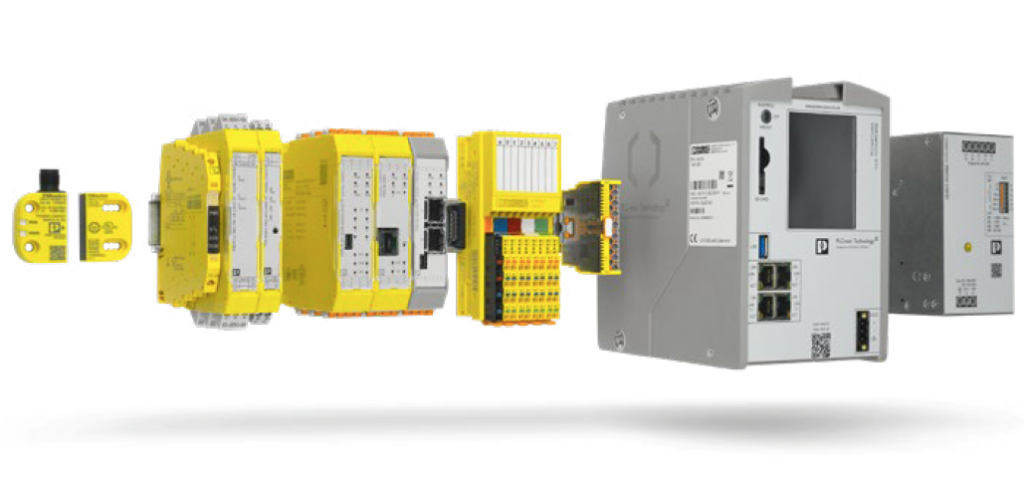
Cabinet builder productivity
To aid the design and layout of the COMPLETE range of control cabinets, Phoenix Contact offers a comprehensive range of tools, resources, and accessories – see Figure 5.

The Phoenix Contact rail assembly and marking design software suite is free and eases the selection and placement of the DIN-rail mounted units and validates it for the correct layout. It also provides the ability to print out labelling information. ID solutions complete the build process, with a variety of desktop and portable printers capable of printing on a range of materials.
Automation and control
To automate and control systems, Phoenix Contact has developed a range of programmable controllers, remote I/Os and gateways, and industrial PC and human-machine interfaces (HMIs). Examples of three are illustrated in Figure 6.

In Figure 6, example 1 showcases a PLC connected to a gateway and human-machine interface (HMI). The HMI is incorporated to visualise the operation of a valve, and the gateway offers network connectivity to legacy devices.
Phoenix Contact offers a scalable range of programmable logic controllers (PLCs), from simple, single-function control to those that support real-time SCADA applications. PLCnext logic controllers provide infinite automation by providing solutions for any IoT application. Take use of the PLCnext modular engineering software, PLCnext store, cloud integration, and PLCnext community sharing platform. PLCnext enables intelligent automation in the control cabinet, in the field, and in smart industrial or building infrastructure.
Recommended products
Programmable Logic Controller, Dual-Core 800MHz Cortex-A9, 512MB RAM 0DO , Ethernet/PROFINET, Phoenix Contact
The PLC can connects to PROFICLOUD IoT platform and is programmable according to IEC 61131-3. Features: PROFINET support, Gigabit ethernet, Cloud communication and storage, Compatible with the PLCnext software suite.
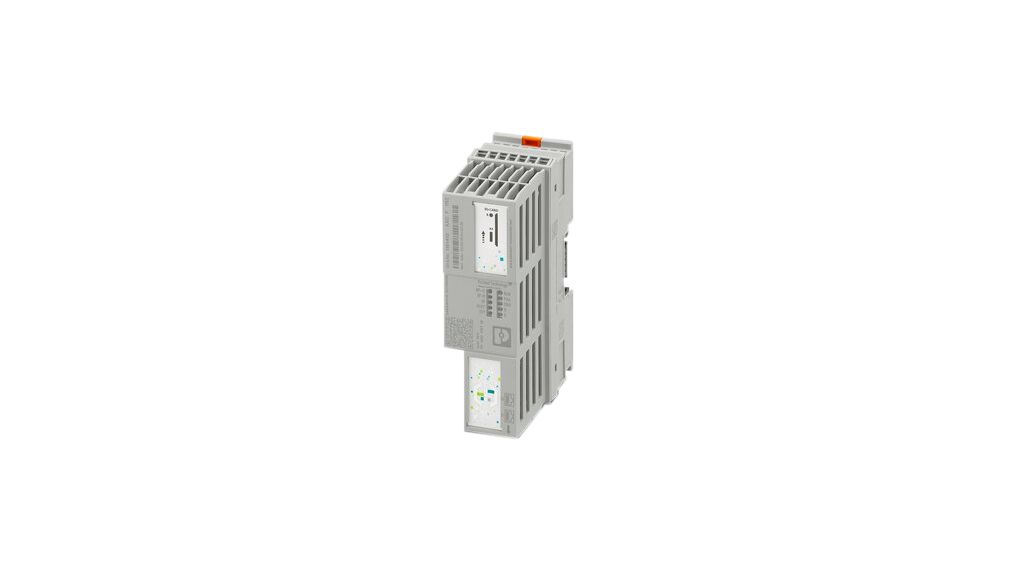
Programmable SIL3 Safety Controller 5DI 3DO 24V, Ethernet/PROFINET/USB, Phoenix Contact
This Programmable SIL3 Safety Controller is programmed via PLCnext Engineer or Eclipse and programmable according to IEC 61131-3 and. It meets safety requirements in accordance with SIL 3 and PLe. Features: PROFINET support, Gigabit ethernet, Cloud communication and storage, Compatible with the PLCnext software suite.
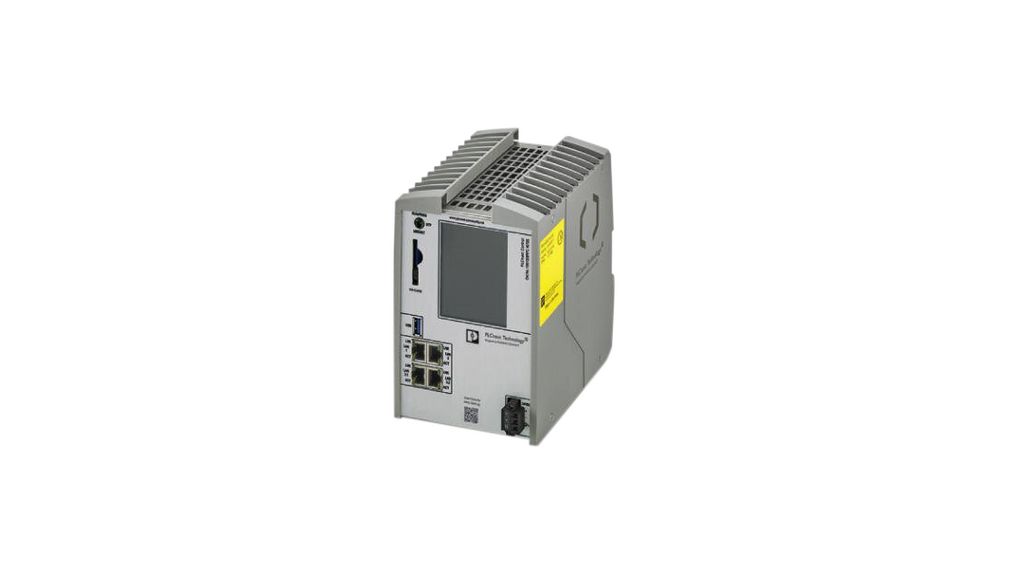
Networking and security
Any IIoT deployment relies on network connectivity, whether wired or wireless. Building any infrastructure based on an internet-connected network exposes it to a host of cybersecurity risks, vulnerabilities, and the potential for exploitation. Implementing and managing a resilient network mitigates the risk of compromise by adversaries. Phoenix Contact networking and security solutions – see Figure 7 – provide scalable, reliable, and robust connectivity and protection whatever communication mediums you use.

Build your cabinet with confidence
Distrelec is a trusted distribution partner for Phoenix Contact products. You can find more information on the COMPLETE range of cabinets, solutions, and devices here.











